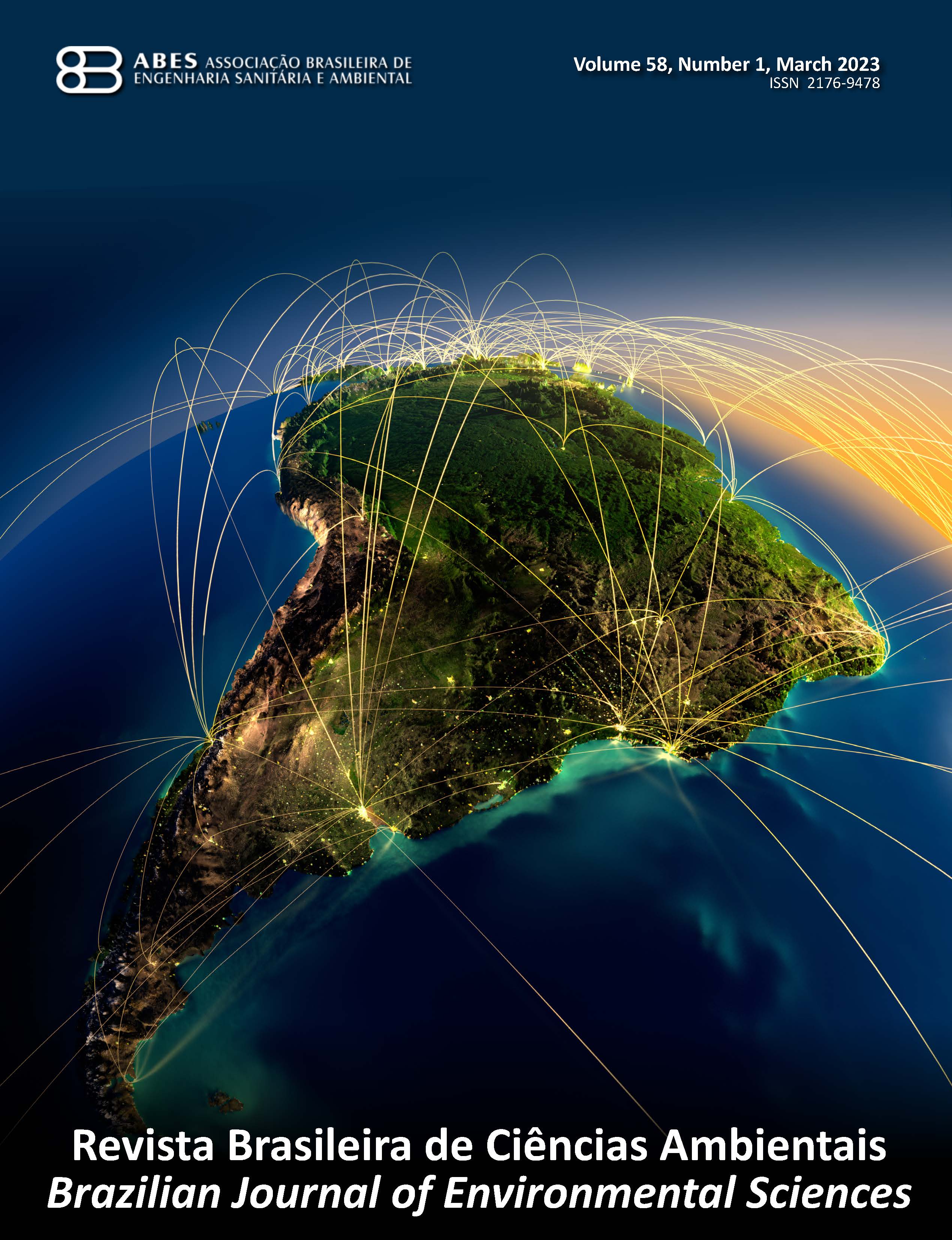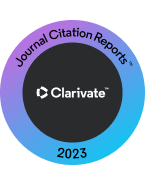A mobile strategy for water participatory monitoring
DOI:
https://doi.org/10.5327/Z2176-94782073Keywords:
contaminants; mobile application; environmental monitoring; on-site detection; geoprocessing.Abstract
The increase in industrialization and urbanization processes has directly affected the quality of water resources worldwide, generating impacts on public health and aggravating the availability of clean water. This study presents AQUA, a mobile application designed as a monitoring tool for urban rivers using colorimetric chemical tests. AQUA enables the analysis and storage of georeferenced data on pollutant levels across specific areas. Tests for ammonia (NH3-N), orthophosphate (PO43--P), iron, and nitrite (NO2-N) were miniaturized and submitted to analytical validation, reaching satisfactory values according to the National Institute of Metrology, Quality, and Technology (INMETRO) guidelines, and presenting results comparable with the classic methodologies using UV-VIS spectrophotometer. The limit values of quantification were below the maximum thresholds established by Brazilian law for surface water quality. Nine urban rivers in Foz do Iguaçu (a city in the State of Paraná) were assessed, with high NH3-N and NO2-N levels, likely indicating untreated sewage discharges. The generated georeferenced pollution map provides a valuable tool for water quality control in local communities. Overall, this strategy enables participatory water quality monitoring in a cost-effective, flexible, and accessible manner, contributing to Sustainable Development Goal 6 by promoting water availability and sustainable management.
Downloads
References
American Public Health Association (APHA), 2017. Standard Methods for the Examination of Water and Wastewater. 26th ed. AWWA, WPCF, Washington, D.C. (Accessed March 01, 2023) at:. https://www.standardmethods.org/doi/book/10.2105/SMWW.2882
Aschale, M.; Sileshi, Y.; Kelly-Quinn, M.; Hailu, D., 2021. Multivariate analysis of potentially toxic elements in surface waters in Ethiopia. Applied Water Science, v. 11 (5), 1-13. https://doi.org/10.1007/s13201-021-01412-6.
Associação Brasileira de Normas Técnicas (ABNT), 1992. NBR 12772: Água - Determinação de fósforo - Método de ensaio. ABNT/CEE Comissão de Estudo Especial, Rio de Janeiro, 9 p.
Bell, C.D.; McMillan S.K; Clinton, S.M.; Jefferson, A.J., 2017. Characterizing the effects of stormwater mitigation on nutrient export and stream concentrations. Environmental Management. v. 5910 (4), 604-618. https://doi.org/10.1007/s00267-016-0801-4.
Blanco-Gómez, P; Jiménez-García, J.L; Cecilia, J.M., 2023. Low-cost automated GPS, electrical conductivity and temperature sensing device (EC + T Track) and Android platform for water quality monitoring campaigns. HardwareX, v. 13, e00381. https://doi.org/10.1016/j.ohx.2022.e00381.
Böck, F.C.; Helfer, G.A; Costa, A.B; Dessuy, M.B. Ferrão, M.F., 2018. Rapid determination of ethanol in sugarcane spirit using partial least squares regression embedded in smartphone. Food Analytical Methods, v. 11 (4), 1951-1957. https://doi.org/10.1007/s12161-018-1167-4.
Böck, F.C.; Helfer, G.A.; Costa, A.B.; Dessuy, M.B.; Ferrão, M.F., 2020 . PhotoMetrix and colorimetric image analysis using smartphones. Journal Of Chemometrics (Online), v. 34 (12), 1-19. https://doi.org/10.1002/cem.3251.
Booch, G.; Rumbaugh, J.; Jacobson, I., 1998. The unified modeling language user guide. Addison Wesley, Berkeley, California, 512 p
Brasil, 2005. Conselho Nacional do Meio Ambiente (CONAMA). Resolução CONAMA nº 357, de 17 de março de 2005. Diário Oficial da União, Brasília.
Gomes, M.S.; Trevizan, L.C.; Nóbrega, J.A.; Kamogawa, M.Y., 2008. Uso de scanner em espectrofotometria de absorção molecular: aplicação em experimento didático enfocando a determinação de ácido ascórbico. Química Nova, v. 31 (6), 1577-1581. https://doi.org/10.1590/S0100-40422008000600050.
Helfer, G.A.; Magnus, V.S.; Böck, F.C.; Teichmann, A.; Ferrão, M.F.; da Costa, A.B., 2017. PhotoMetrix: an application for univariate calibration and principal components analysis using colorimetry on mobile devices. Journal of the Brazilian Chemical Society, v. 28 (2), 328-335. https://doi.org/10.5935/0103-5053.20160182.
Inagawa, A.; Uehara, N., 2020. Development of colorimetric analysis with smartphones-captured images based on RGB-spectrum conversion methods. Bunseki Kagaku, v. 69 (12), 693-706. https://doi.org/10.2116/bunsekikagaku.69.693.
Instituto Nacional de Metrologia, Normalização e Qualidade Industrial (INMETRO), 2020. DOQ-CGCRE-008 Rev.09 – Orientação sobre validação de métodos analíticos - junho, 2020 (Accessed March 01, 2023) at:. http://www.inmetro.gov.br/sidoq/arquivos/cgcre/doq/doq-cgcre-8_09.pdf
Jovanovic, S.; Carrion, D.; Brovelli, M.A., 2019. Citizen Science for water Quality Monitoring Applying Foss. The International Archives of the Photogrammetry, Remote Sensing and Spatial Information Sciences, v. XLII-4/W14, 119-126. https://doi.org/10.5194/isprs-archives-XLII-4-W14-119-2019.
Lindner, R.C.,1944. Rapid analytical method for some of the more common inorganic constituents of plants tissues. Plant Physiology, v. 19 (1), 76-89. https://doi.org/10.1104/pp.19.1.76.
Lourenço, E.C.; Paula, S.; Setti, G.O.; Toci, A.T.; Padilha, J.C.; Silva, E.M; Boroski, M., 2021. Determinação do teor de ferro utilizando o aplicativo Photometrix Pro®: a tecnologia a favor do ensino de química. Revista Virtual de Química, v. 13 (1), 192-206.
Nguyen, K.T.; Nguyen, H.M.; Truong, C.K.; Ahmed, M.B.; Huang, Y.; Zhou, J., 2019. Chemical and microbiological risk assessment of urban river water quality in Vietnam. Environ Geochem Health v. 41 (16), 2559-2575. https://doi.org/10.1007/s10653-019-00302-w.
Nygrén, N.A.; Tapio, P.; Horppila, J., 2017. Will the Oxygen-Phosphorus Paradigm Persist? – Expert Views of the Future of Management and Restoration of Eutrophic Lakes. Environmental Management v. 60, 947-960. https://doi.org/10.1007/s00267-017-0919-z.
Pedroso, D.Q.; Knaul, L.E.; Kapp, M.N.; Goncalves, C.C.S.; Boroski, M., 2024. Using smartphone for monitoring colorimetric reactions aiming at determining antioxidant activity. Food Science and Technology, v. 44, e00198. https://doi.org/10.5327/fst.00198.
Pivetta, G.G.; Gastaldini, M.C.C., 2019. Presence of emerging contaminants in urban water bodies in southern Brazil. Journal of Water and Health, v. 17 (2), 329-337. https://doi.org/10.2166/wh.2019.092.
Rodrigues, J.A.; Silva, S.; Cardoso, V.V; Benoliel, M.J.; Cardoso, E.; Coelho, M.R.; Martins, A.; Almeida, C.M.M., 2021. Screening and seasonal behavior of analgesics, non-steroidal anti-inflammatory drugs, and antibiotics in two urban wastewater treatment plants. Environmental Management, v. 68 (3), 411-425. https://doi.org/10.1007/s00267-021-01496-5.
Silva, G.M.; Garcia, J.A.; Garrita, J.A.; Cunha, D.G.F.; Finkler, N.R.; Mendiondo, E.M.; Ghiglieno, F., 2022. Smartphone-based spectrometry system as a prescreening assessment of copper and iron for real time control of water pollution. Journal of Environmental Management. Journal of Environmental Management, v. 323, 116214. https://doi.org/10.1016/j.jenvman.2022.116214.
União Europeia (UE), Diretiva da União Europeia 2020/2184. Diretiva 2020/2184 do Parlamento Europeu e do Conselho de 16 de dezembro de 2020 relativa à qualidade da água destinada ao consumo humano (reformulação). Jornal Oficial da União Europeia, 435/1-435/62.
von Mühlen, L.; Prestes, O.D.; Ferrão, M.F.; Sirtori, C., 2022. Miniaturized method for chemical oxygen demand determination using the PhotoMetrix PRO Application. Molecules, v. 27 (15), 4721. https://doi.org/10.3390/molecules27154721.
Yadav, P.; Laddha, H.; Agarwal, M.; Gupta, R., 2022. Fun with smartphones: handy solution for quantification of debilitating fluoride ions in drinking water. Journal of Chemical Education tv. 815, 1-8. https://doi.org/10.1021/acs.jchemed.2c00216.
Zheng, S.; Li, H.; Fang, T.; Bo, G.; Yuan, D.; Ma, J., 2022. Towards citizen science. On-site detection of nitrite and ammonium using a smartphone and social media software. Science of Total Environment v. 815, 1-8. https://doi.org/10.1016/j.scitotenv.2021.152613.
Published
How to Cite
Issue
Section
License
Copyright (c) 2024 Revista Brasileira de Ciências Ambientais

This work is licensed under a Creative Commons Attribution 4.0 International License.

























